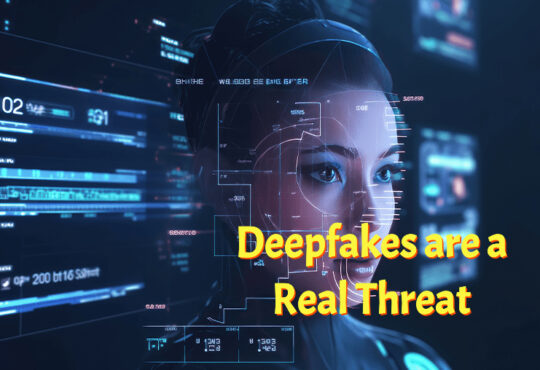
By Anantha Krishnan
The digital landscape is continuously evolving, and with the advent of Web3, a new era of technological advancement has dawned. Web3 promises a decentralized and user-centric Internet that gives various advantages to the individual and society as a whole. Blockchain technology started with Bitcoin and now has expanded into diverse sectors, utilizing its properties of decentralization, security, and transparency.
Blockchain technology has become a game-changing innovation with enormous potential in a variety of industries. In the last few years, the diversification and growth of Web 3 has augmented considerably and the disruptive technology has penetrated various sectors, including finance, supply chain management, administration, real estate, the arts, and education.
The advent of peer-to-peer transactions made possible by blockchain technology has revolutionized the world of finance and banking. Blockchain technology has opened a new facet to security and improved transparency. Additionally, the inherent foundation of the technology allows for direct transactions between users and service providers without the involvement of intermediaries. Decentralized finance (DeFi) platforms built on blockchain also enable lending, borrowing, and trading of digital assets without the use of conventional financial intermediaries, giving people more control over their finances. Furthermore, Non Fungible Tokens (NFTs) have seen a massive rise in adoption and have been one of the key catalysts of web3 mainstream growth. NFTs in the form of digital art, exclusive merchandise, collectibles, virtual real estate, as well as virtual footwear, clothes, and accessories enabling the entry of major web2 brands into the web3 sector, have become a popular offering of web3 technology. These unique tokens also enable provenance tracking and authentication for digital artworks, providing creators and collectors with a secure platform to tokenize and trade digital assets. This innovation has revolutionized the concept of digital ownership and opened up new revenue generating opportunities for artists and collectors.
Disrupting another traditional industry, blockchain technology improves transparency in the logistics and supply chain sectors by monitoring and confirming the flow of goods from the producer to the consumer. It makes it possible for products to be tracked, authenticated, and verified in real-time, which lowers the likelihood of product fraud, boosts productivity, and ensures moral sourcing. Supply chains are made more efficient, secure, and transparent with the inclusion of decentralized technology.
By ensuring data’s transparency and immutability, blockchain technology has completely changed the way administrative procedures are carried out. By enabling blockchain in governance, administrative systems can improve data management, streamline procedures, and offer better public services. Through transparency and immutability of records, the cases of fraud and data manipulation can be completely avoided. Additionally, NFTs can help create unique identities of important and confidential documents which will allow restricted access as well as high security.
To speed up property transactions, ease title transfers, and enable fractional ownership, the real estate sector has embraced blockchain technology. Blockchain eliminates the need for intermediaries, reducing fraud and transaction costs. It provides transparent and tamper-proof records of ownership, making real estate transactions more secure and efficient. The metaverse has been an integral platform for acceleration of virtual real estate. Currently, a major trend, the web3 metaverse platforms allow fractional ownership and leasing of virtual land that is then utilized by firms, brands, creators, etc, to surpass geographical boundaries and conduct events, programs, and other initiatives at a global scale. This promising evolution of web3 technology can further scale into inter-metaverse interactions and can also enable virtual economies with public sector and private sector virtual offerings co-existing in harmony.
Data storage is another large scale industry being steadily transformed through Blockchain technology. With the potential to securely store and verify academic credentials, medical records, land ownership titles, professional records, and other personal documents, without reaching saturation, the web3 sector can cause waves in the data storage and management industries. Concerns of high fees, illegal data mining, and data manipulation are rampant in the cloud storage sectors today and blockchain technology has proven to be the most secure and private solution for it.
In conclusion, blockchain technology has moved beyond its original use as just a transaction system and entered a number of different sectors, providing advantages like efficiency, security, immutability, and transparency. The potential of blockchain technology is still being released across a wide range of industries, empowering people and revolutionizing established structures. Furthermore, the web3 sector has evolved to include vast ecosystems that offer a wide range of solutions across DeFi, NFTs, decentralized data management, decentralized applications, and more. MOI, the world’s first context aware P2P blockchain protocol based on the novel Interaction State Machine technology, with a distinct focus on user centricity and with a fully p2p consensus mechanism, data structure, and execution model is an ecosystem focused on providing scalability, flexibility, and security to users enabling them to create diverse blockchain applications and enhance innovations. There is a definite possibility of a web2 and web3 hybrid future and one of the key objectives of MOI to further smoothen and ease this transition, thereby enabling sophisticated virtual worlds, futuristic gadgets, and a tech-driven and aware society.

(The author is Anantha Krishnan, Founder, MOI , and the views expressed in this article are his own)








